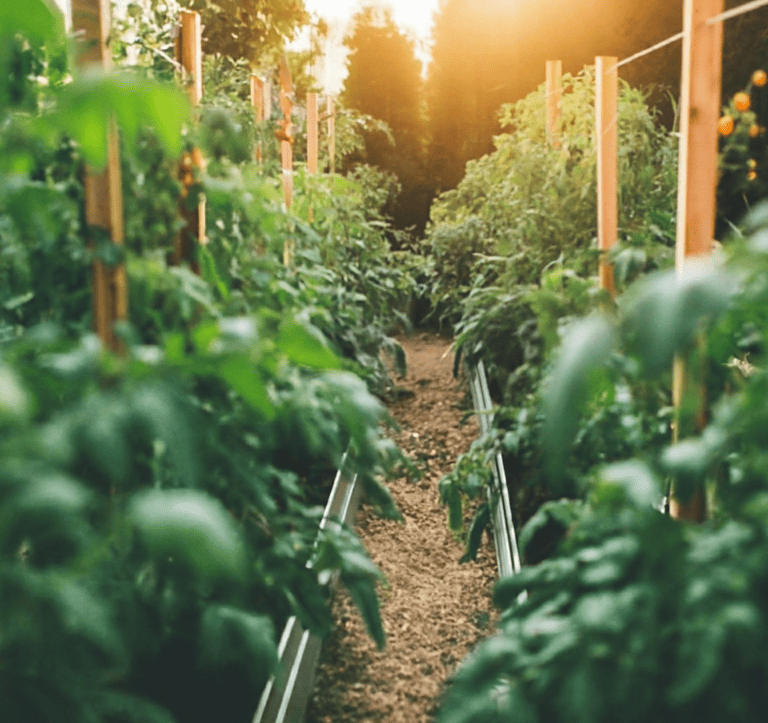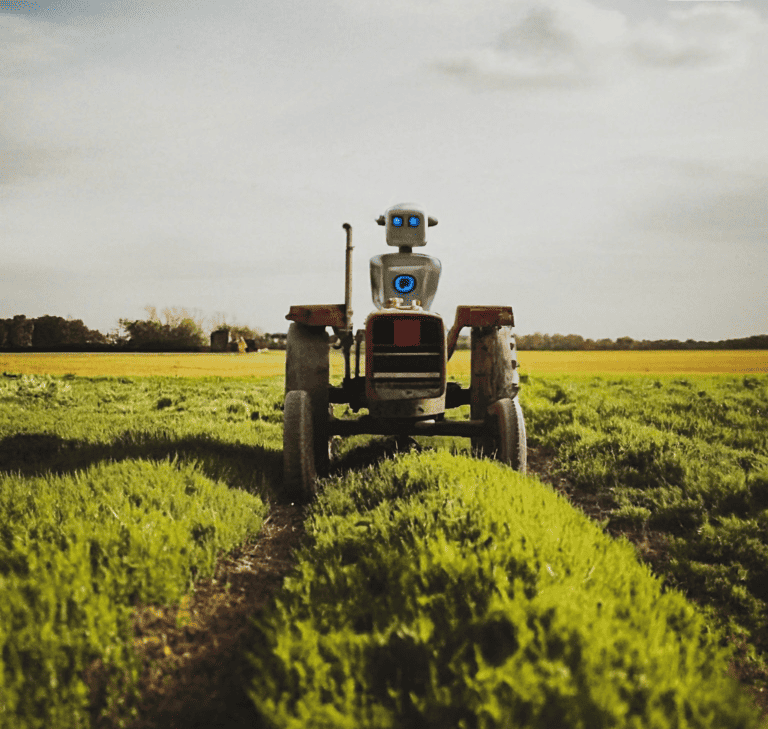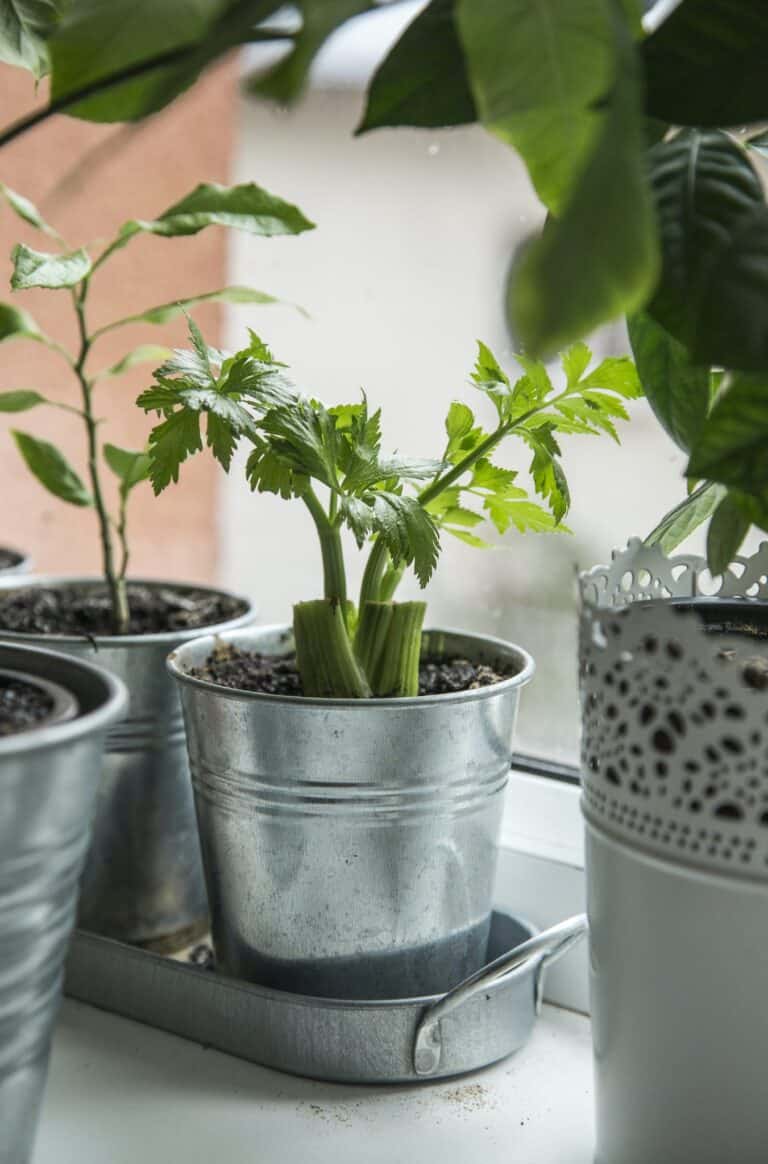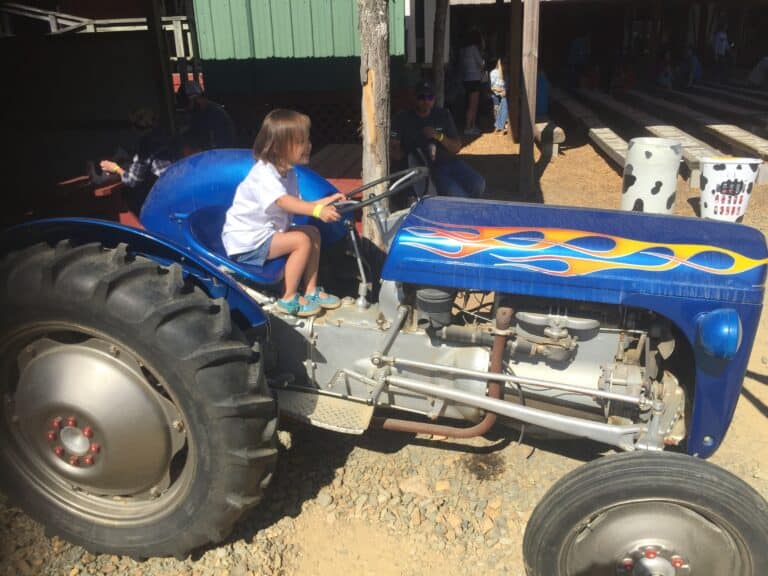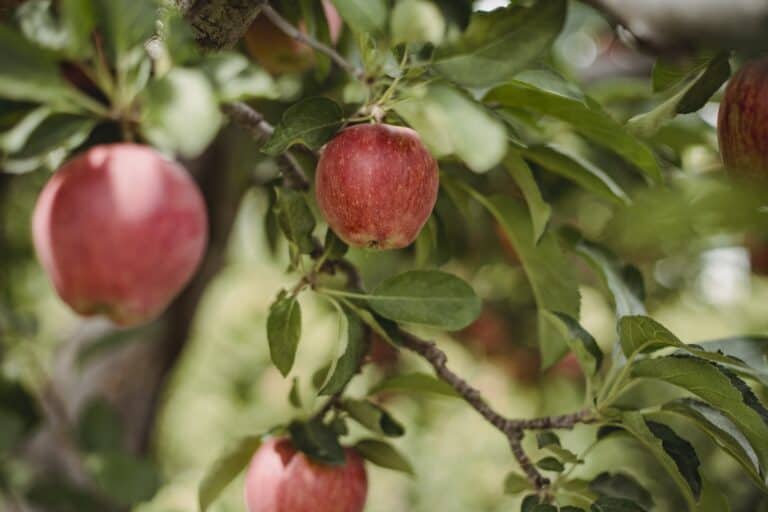Choosing Tomato Varieties: Understanding Indeterminate vs Determinate Tomatoes
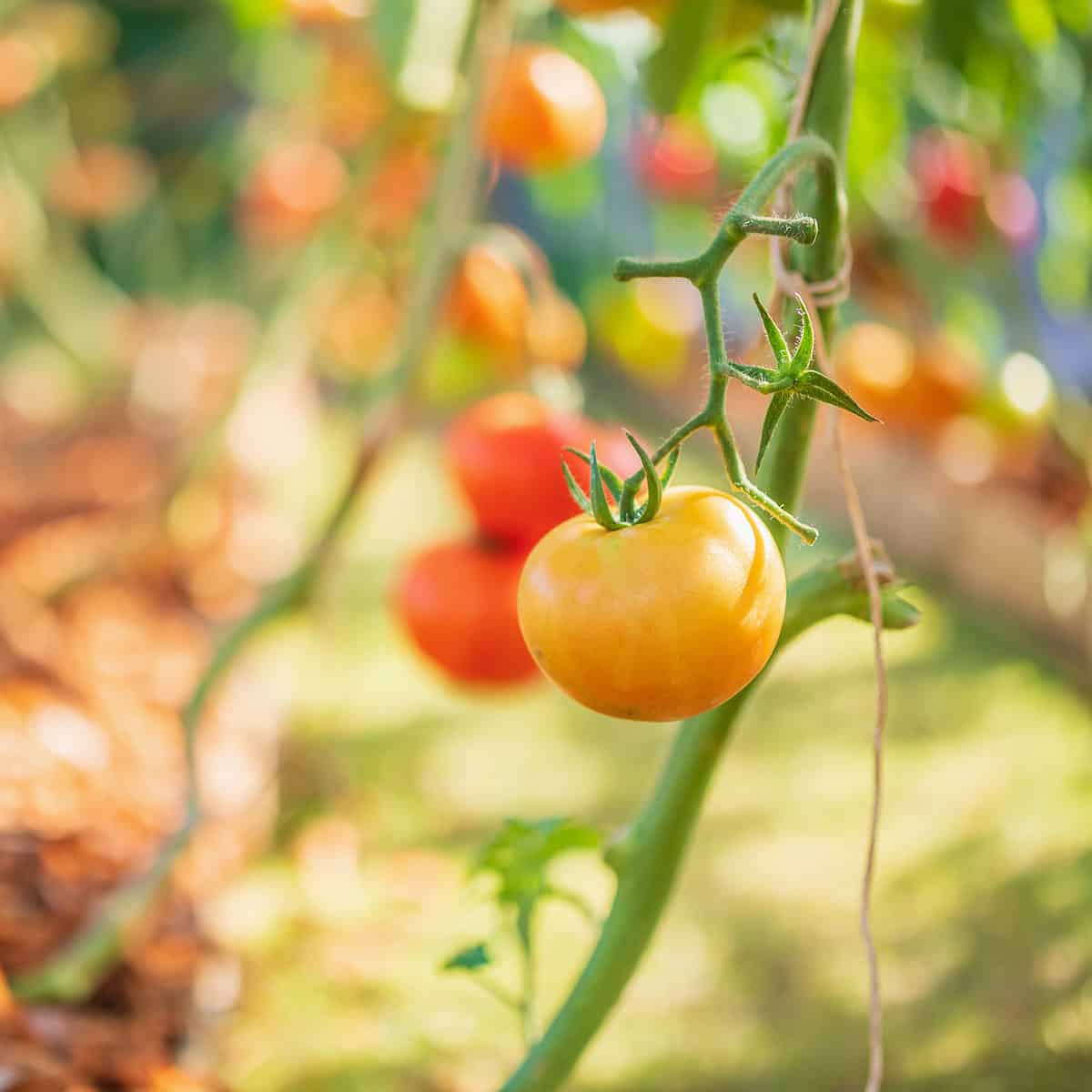
Are you an aspiring gardener eager to produce a bountiful harvest of juicy, delicious tomatoes? Understanding the differences between indeterminate vs determinate tomatoes is the key to a successful gardening experience. In this blog post, we’ll help you unravel the mysteries of these two growth patterns and provide valuable tips for cultivation, care, and maximizing your yield. Let’s dive in and turn your garden into a tomato paradise!
Key Takeaways
Identifying the growth patterns of indeterminate and determinate tomatoes can help gardeners optimize layout, provide support, and customize cultivation techniques.
Staking with cages or trellises is necessary for maximizing productivity in indeterminates while minimal support is needed for determinates.
Understanding the differences between varieties helps plan a successful harvest by tailoring to culinary preferences, garden space & layout planning.
Unraveling the Growth Patterns: Indeterminate vs Determinate Tomatoes
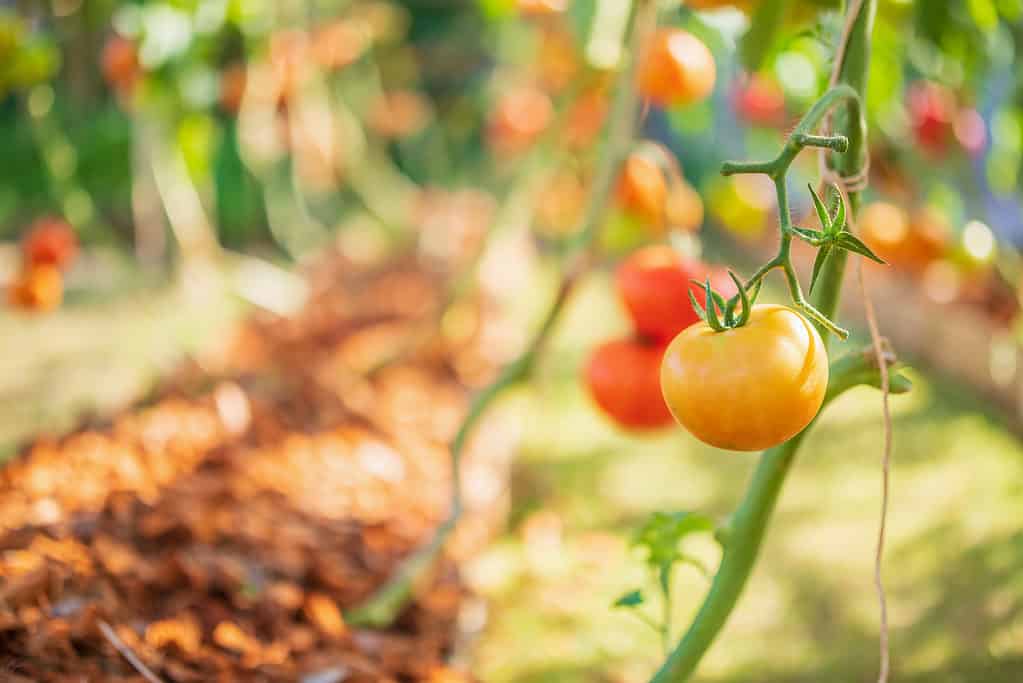
Tomatoes come in two varieties, determinate and indeterminate. It’s important to be able to recognize the differences between them so that you can get maximum results from your gardening efforts. Determinates are compact with fruit ripening all at once. Perfect for canning or preserving foods. Indeteminate tomatoes grow continuously throughout the season giving a steady supply of fresh fruits ideal for salads or sandwiches.
To determine which variety is growing in your garden look out for clues – leaves suggest an indetermiante while flower buds signify it’s determinate type tomato plant. Understanding how these growth habits work will help ensure optimal support and cultivation techniques that maximise harvests!
The Vining Nature of Indeterminate Tomato Plants
Indeterminate tomato plants exhibit a continuous growth that needs to be supported and trimmed back in order for it not to sprawl. This type of vining can yield fruits all the way up until the first frost, making sure there’s always tomatoes available throughout the season.
Maintaining healthy indeterminate plants includes creating support such as stakes or trellises, pruning away excess foliage so sunlight and air circulation is maximized, decreasing any possibility of disease emergence while ensuring optimum fruit development – these are some key activities necessary when taking care of your indeterminate tomatoes!
The Compact Journey of Determinate Tomato Plants
Determinate tomato plants offer the perfect solution for gardeners who want to can, process and preserve their harvest. They are also suited for small spaces or container gardens due to having a more limited growth pattern than indeterminates, reaching an established height with all fruit ripening over a two-to-three week period. Although determinate types may not need as much support during cultivation, it’s recommended that you employ some type of trellis, stake or cage so fruits do not split when they reach full maturity under the weight of heavy tomatoes.
Tailoring Garden Space: Best Practices for Supporting Tomato Plants
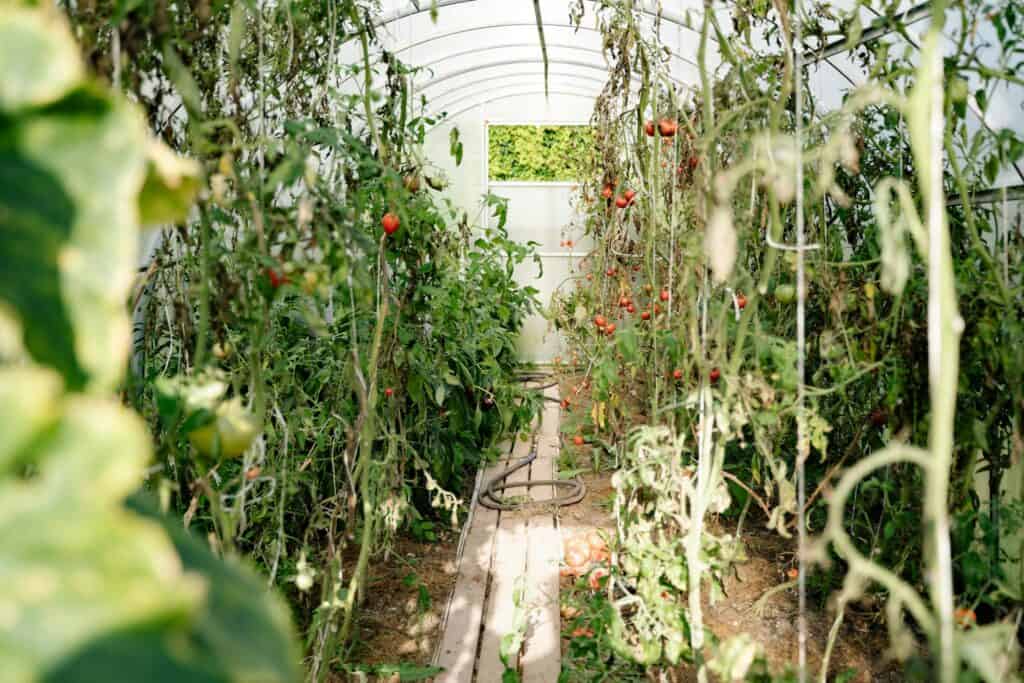
If you’re cultivating indeterminate or determinate varieties of tomato plants, providing proper support is essential for healthy and productive growth. Without suitable supporting structures such as cages, stakes and trellises made from wood plastic metal t-posts or wire panels, the sprawling tomato vines are prone to diseases and pests. It’s suggested that minimum height of six to seven feet be used while growing with indeterminate tomatoes but smaller cages or poles can work fine when it comes down to determinates types. For secure installation follow applicable procedures accordingly giving your beloved plant an edge in success over its competitors.
Staking Indeterminate Varieties for Vertical Growth
Indeterminate tomato plants are known for their sprawling habit of growth and thus require support from tough stakes or cages to ensure vertical development. For this purpose, larger tomato cages are suggested in combination with wooden or bamboo poles as extra backing. In contrast, metal rebar posts can give adequate reinforcement but need assistance through twine or twist ties to be reliable.
Caring correctly for the vigorous vines of indeterminate tomatoes by pruning them plus granting efficient airflow which is essential especially if you have humid climate – all these will bring bountiful returns in form of delicious fruits throughout the season after furnishing appropriate staking and taking good care generally.
Keeping Determinate Types Upright with Minimal Support
For determinate tomato plants, there is no need for complicated supports because their growth pattern is compact. A small stake or cage can be used to help the plant stay upright when it has fully ripened fruit on its branches.
Alternatively, simple stakes spaced at intervals of 8 inches around the main trunk of the plant will give good support with minimal effort required from you as a gardener and ensure your tomatoes are secure while they mature into delicious produce!
Cultivation and Care: Maximizing Your Tomato Yield
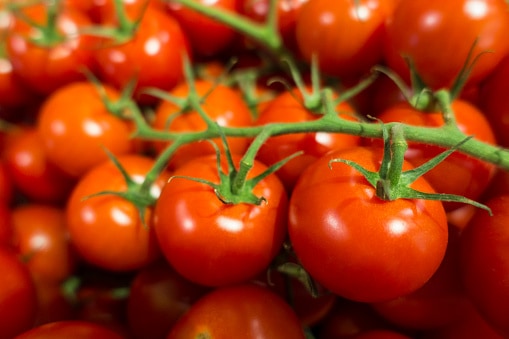
No matter if you are growing an indeterminate or determinate tomato plant, proper care and cultivation practices will make a great difference in how much fruit your plants produce. Tomatoes require soil with slightly acidic pH levels (6.2 to 6.8), regular watering, fertilization as well as support from trellises or cages so that they can prosper and deliver quality fruits for the harvest season ahead of us.
The most important step is providing adequate supplies for our tomatoes: fertile soils mix, consistent waterings along with fish emulsion fertilizer combined together ensure healthy growths of excellent-tasting tomatoes! Pruning down one primary vine plus several other secondary ones also encourages good overall yields – exactly what we want when it comes to harvesting delicious fresh vegetables every year!
Finally yet importantly, compliance with those suggested guidelines helps not only guarantee that each type of tomato receives optimal treatment, but guarantees plentiful harvests filled with tasteful vegetables. This ultimately results in a top-notch product throughout its production cycle all while keeping particular standards intact during the process too.
Nurturing Indeterminate Varieties for a Steady Harvest
Indeterminate tomato plants have the great advantage of providing a continuous supply of fruit for those with long growing seasons, as these varieties mature and are capable of yielding through this period. To ensure that your harvest remains plentiful, you must take care in staking and pruning them properly, both maintaining their shape but also keeping potential illnesses at bay. Regular maintenance will save you money. Not only will it keep your indeterminate tomato plants looking neat and healthy, it should reward you all season long with an abundance of delicious fruits!
Efficiently Growing Determinate Varieties for Bulk Harvest
Tomatoes, especially determinate tomato cultivars, can be grown efficiently and with minimal support such as stakes or cages to produce a bounty of ripe tomatoes in a short period. Planting these type of tomatoes should take place on soil which is well-draining, high in organic matter and slightly acidic (pH 6.2, 6.8). Watering the crop properly along with adequate sunlight exposure ensures great yields for processing or preserving purposes from this particular group of tomato cultivars.
Selecting the Right Tomato for Your Needs
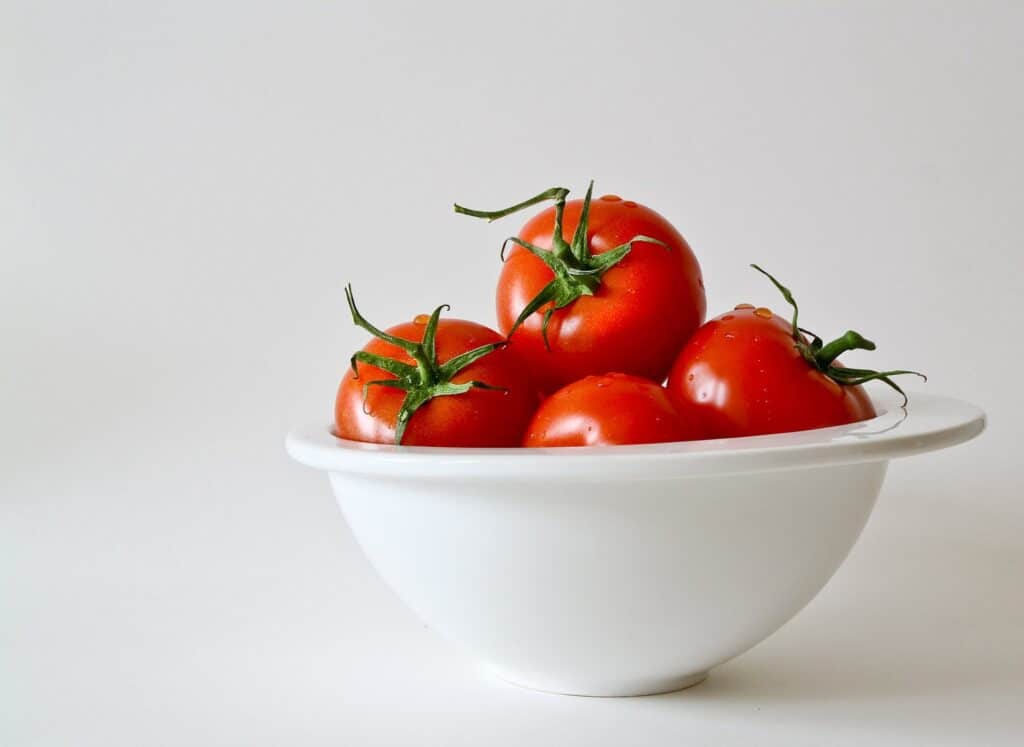
When selecting a tomato variety, it is important to take into account what kind of cooking you’ll be doing and how much space your garden has. Determinate varieties are great for canning and preserving since they produce their fruit in one single crop. On the other hand, indeterminate tomatoes have extended harvesting periods which make them suitable if fresh eating is desired. With these factors considered carefully as well as any layout planning required, you’ll find success with which type of tomato suits your needs best, determinate or indeterminate!
Fresh vs Preserved: Culinary Considerations
Indeterminate tomatoes are the best option for fresh eating because they yield fruit throughout their growing season, making it easy to enjoy a flavorful supply of these tasty fruits. Due to having an extended period in which to mature, indeterminates also tend to have a richer taste than determinate varieties.
On the other hand, if you plan on preserving or canning your harvest, look no further than determinate tomatoes. Since they produce all at once and take up less space while growing, this type is better suited for large-scale processing as well as saving food products over time. By understanding how each variety behaves culinarily one can easily make an informed decision when choosing between both indetermine and determinte types of tomato plants!
Space Savers or Spreaders: Garden Layout Planning
Garden design should be taken into account when deciding what tomato varieties to grow. Determinate types are usually more compact and thus perfect for limited garden space or containers, while indeterminate kinds tend to spread out needing trellises or cages for support due to their sprawling growth pattern.
No matter if your preference is determinates because of their size-saving quality or the prolific abundance that comes with an indeterminate variety, there’s a tomato plant tailored specifically to fulfill each gardener’s needs.
Popular Tomato Varieties and Their Growth Habits
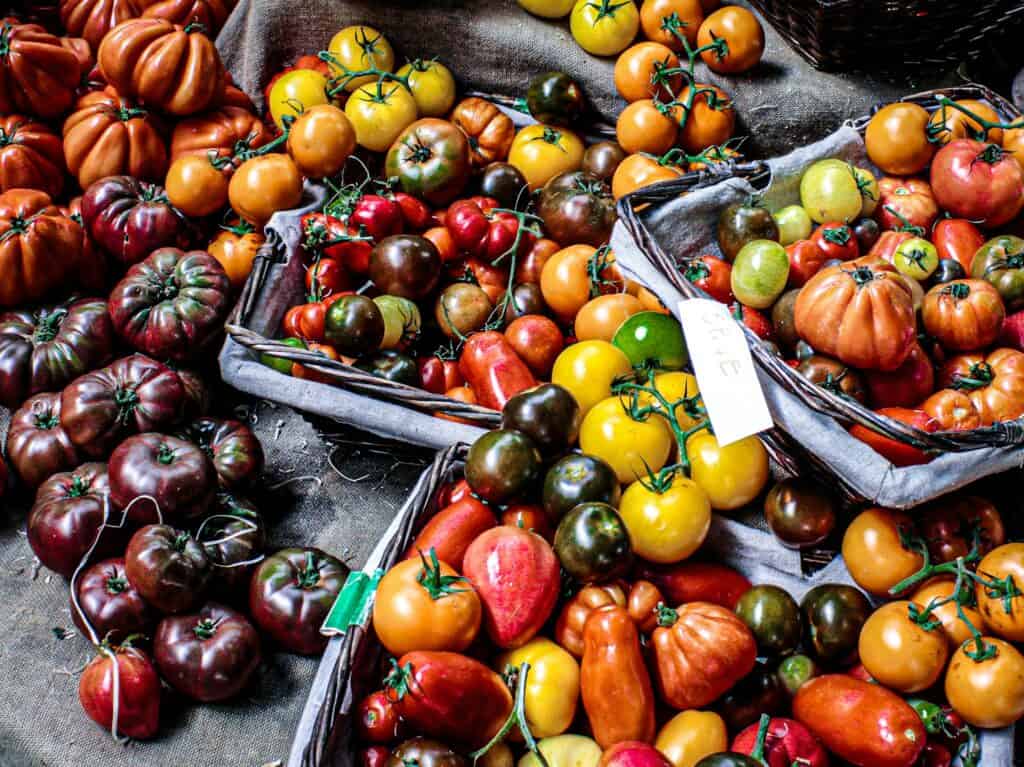
To make informed planting decisions, it is important to understand the different types of tomatoes available and their respective growth habits. Famous indeterminate tomato varieties include ‘Beefsteak’, ‘Big Boy’, ‘Brandywine’, ‘Sungold’ and ‘Sweet Million’. They can produce fruit until frosty weather arrives at season’s end. Popular determinate types for cultivation in gardens or small farms are Mountain Merit, Plum Regal Roma, and Red Racer. Plus Plum Perfect as well as Tasti Lee together with Iron Lady too, along with Bush Early Girl which is also popular among them all. Having knowledge about these kinds of fruits and their behavior will help plan garden layout properly while providing adequate support so that you may have maximum yield from your harvest.
Cherished Cherry Tomatoes: Small Size, Big Flavor
Cherry tomatoes come in determinate or indeterminate varieties, making them an incredibly versatile choice for many culinary purposes. Popular types of cherry tomatoes include Violet Jasper, Matt’s Wild Cherry, Black Pearl and Green Envy among others such as Midnight Snack, Mirabelle Blanche and Orange Sunsugar to name a few. The small size yet bold flavor makes these tomatoes ideal for snacking on fresh salads or even roasting over dishes like crostini toppings and pasta sauces. Not only are they delicious, but also quite simple to grow, so why not add some extra color to your garden with their pleasant taste?
The Beloved Beefsteak: Large and In Charge
Beefsteak tomatoes are the type of indeterminate varieties that require ample support. These veggies produce very large fruits, often weighing several pounds and growing more than 6 feet tall. They have a great texture for preparing sandwiches, burgers or salads due to their size so slicing them is easy and rewarding!
Taking care of your beef steaks can guarantee you an impressive harvest. Cages, stakes or trellises should be used in providing proper support, follow spacing recommendations with plants 5 ft apart from each other, tie it up as they grow taller & stronger. Make sure regular maintenance such as watering & fertilizing takes place ; look out for potential pests/diseases to take action accordingly and finally when fully ripe pick those deliciously big fruits!
With all these tips being taken into consideration, following the given instructions will certainly reward one’s efforts generously through juicy beefsteak tomato harvests at home.
Seasonal Strategies: Timing Your Tomato Planting
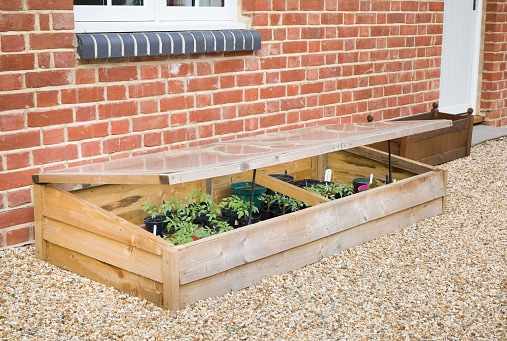
When it comes to maximizing the harvest of tomatoes, understanding and scheduling based on the growth habits for various varieties can be a game-changer. Planting indeterminate tomato plants until about 15 weeks before winter sets in should provide an ongoing supply throughout the season. Determinate or semi-determinates may do best when they are sown after any potential risk from frost has passed, typically producing their fruits within a more condensed timeframe.
Planning for Early Girl and Other Semi-Determinate Types
For an extended harvest period, semi-determinate tomato varieties like Early Girl provide a balance between indeterminate and determinate types of tomatoes. Reaching three to five feet tall, these bushes are bigger than their traditional determinate cousins so will require support while they grow. To ensure success with your semi-determinates, it is important to follow the steps below.
Plant them at the recommended time after frost has past in your region;
2.Be aware that this type needs extra care throughout its lengthy growing season for maximum production.
3 Be sure you have adequately supported plants as well as giving proper attention (watering/fertilizing); 4Finally take advantage of all the deliciousness available over several weeks from these unique hybrid tomatoes!
Summary
Knowing the disparities between indeterminate and determinate tomatoes is crucial in producing a fruitful gardening experience. Through understanding this post, you’ll be well-armed to select the suitable variety of tomato for your requirements, give necessary assistance and optimize harvest. Irrespective whether it’s cherry tomatoes used as snacks or beef steaks for slicing – maybe even with determination varieties intended for canning/preservation – harvesting a flourishing quantity of succulent tomatoes now isn’t an issue! Happy growing!
Frequently Asked Questions
Which is better determinate or indeterminate tomatoes?
For plentiful harvests and extended harvesting times, growers should consider planting both determinate and indeterminate tomatoes. There are also several semi-determinate varieties available if desired. Utilizing support for the plants is suggested in order to ensure maximum success when using a combination of determinate and indeterminate tomatoes or solely one of them.
Are cherry tomatoes determinate or indeterminate?
Tomatoes, both determinate and indeterminate varieties, are grown in various forms. The growth habit of the latter variety is large and sprawling compared to the former variety which has a more compact bush-like shape. They yield one crop per season as opposed to multiple crops with cherry tomatoes that tend towards being indeterminate.
Why would you want determinate tomatoes?
Determinate tomatoes are the perfect choice for those with limited garden space, since these plants require less room and all their fruit ripens simultaneously, ideal if you plan to can your harvest. They stand out from indeterminate varieties of tomatoes in that they provide a bumper crop at once instead of over time.
Which tomatoes do you prune determinate or indeterminate?
When it comes to pruning tomato plants, indeterminate varieties should be the focus since they keep growing throughout the whole growing season. Determinate tomatoes do not need any trimming as they reach a certain size and cease their growth.
What is the difference between determinate and indeterminate?
The difference between determinate and indeterminate varieties is that the former are easier to maintain since they don’t need staking. While, for the latter ones, more effort needs to be put into ensuring their production of fruit throughout the season. Determinates have a much lower maintenance requirement compared to indeterminates if you want successful results in terms of producing results.

